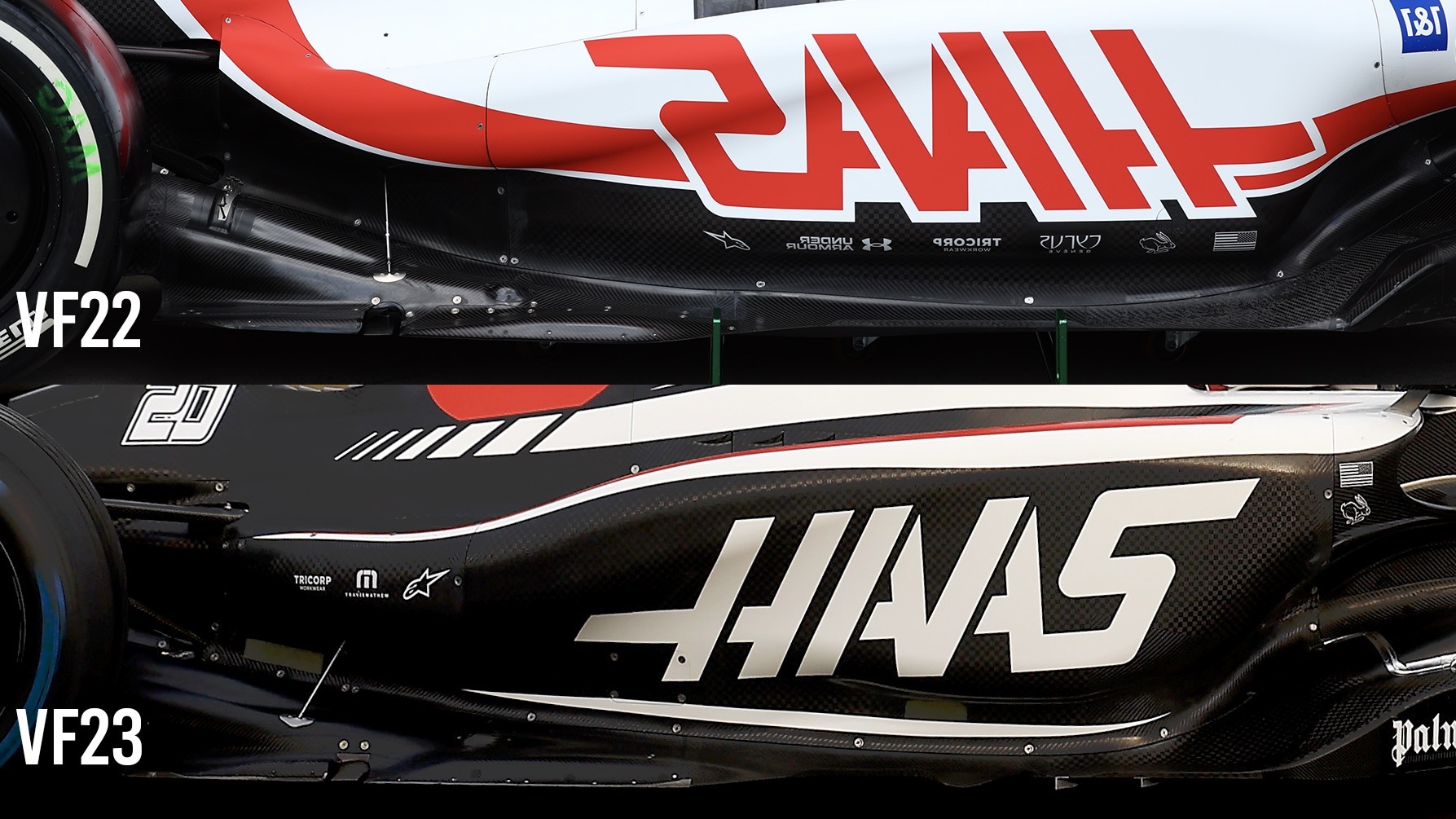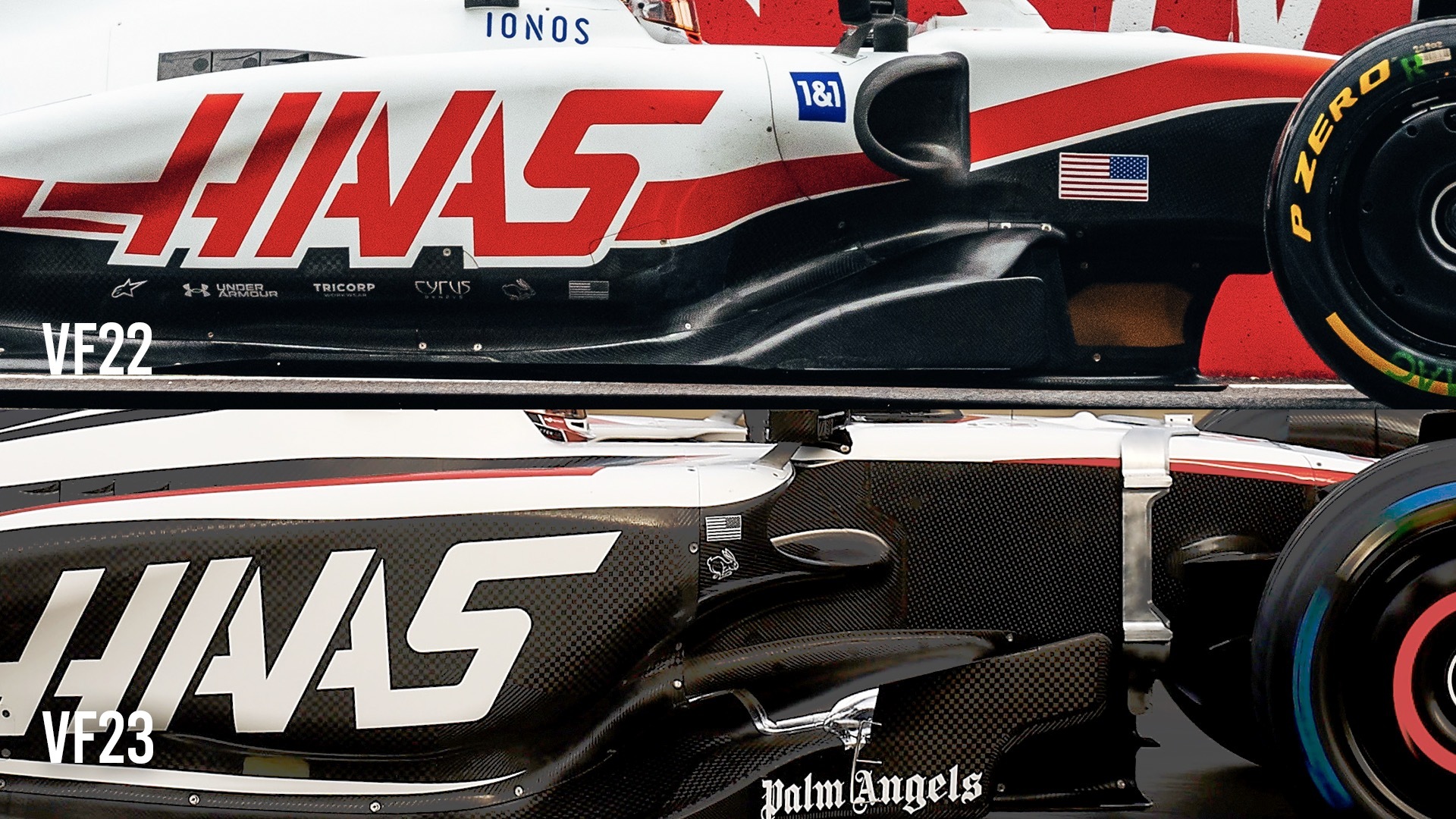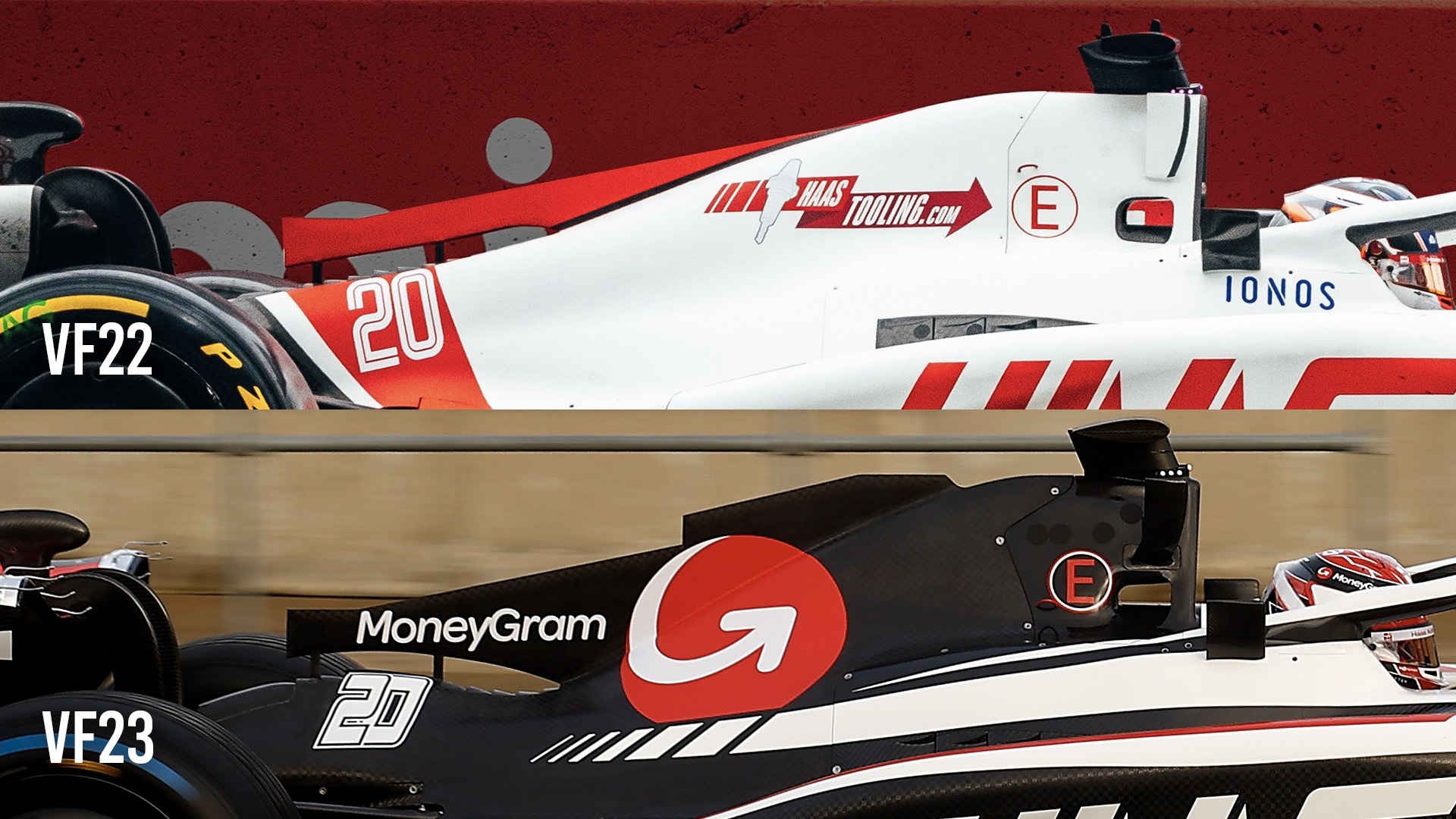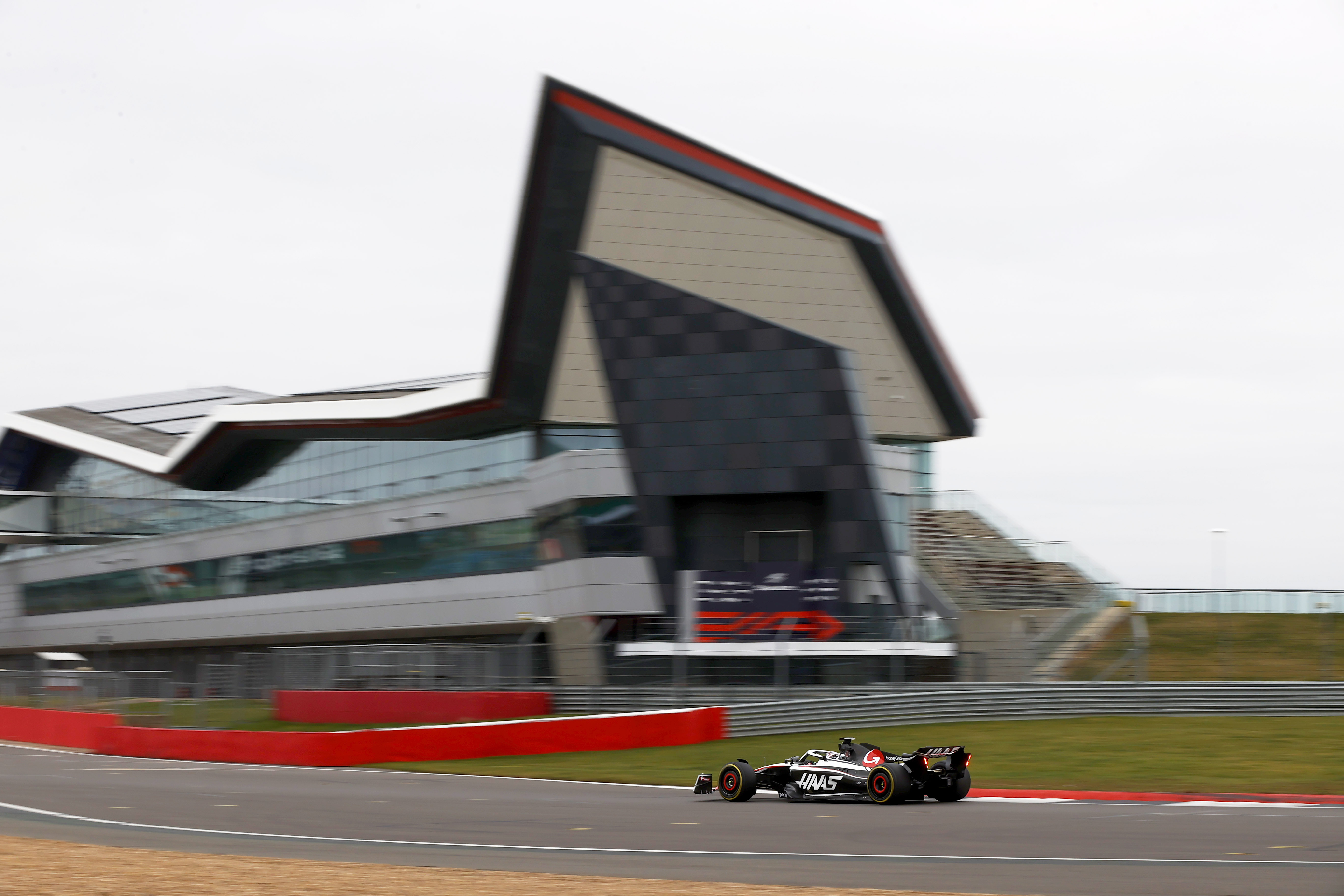Just under a fortnight after Haas showed off its new 2023 Formula 1 livery, the actual car has now broken cover.
It’s a detailed development of last year’s design with some interesting changes.
One key change is that we believe the leading edge of the sidepods is a little further rearward. Certainly the top of the radiator inlet is, but the bottom of the inlet duct and more importantly the leading edge of the floor are not moved back by nearly as much. All three leading edges are staggered to separate the flow from one affecting the flow on another.

I’ve annotated one of the images Haas released so we can see some of the changes in more detail and how they affect the airflow around the car.
Orange highlight: Starting with the sidepod upper surface, Haas has increased the Ferrari-style bathtub top surface to reduce the amount of airflow that would spill over this edge into the coke bottle area and reduce its effectiveness in helping to seal the sides of the floor.
Purple arrows: These show the flow into the radiator inlet, high up along the sides of the chassis.
Yellow ellipse: This ellipse highlights the stagger in the radiator inlet. This is to reduce the risk of airflow spillage when the radiator chokes and can’t handle as much airflow that is presented to it. You need to minimise this spillage that could be pulled into the sidepod front corner, if this happens it would reduce the effect of this undercut on the complete flow structure around the sides of the car.
Yellow arrows: These show where that flow spillage will be trained on, which is quite late in the sidepod coke bottle area and well away from that front corner undercut (2022-2023 comparison below).

Red arrows: These show the airflow that comes through the front suspension, goes under the lower edge of the radiator inlet and is then turned abruptly by the aggressive undercut on the front corner of the sidepod.
This airflow being turned abruptly will help scavenge some of the airflow that is being turned outwards by the underfloor’s leading edge splitters.

Blue arrows: These show the flow that is being pulled out from underneath the front corner of the car. This will then join forces with the yellow flow and the red flow lines and be pulled into the coke bottle by the low pressure just behind the rear tyre.
If this all works as planned it can generate a reasonable drag reduction as it fills up the void behind that rear tyre. This flow will also help the performance of the diffuser.
Green arrows: The rear tyre when rotating onto the track surface forces airflow around its inside and outside. It has to, or else the tyre would be rotating on a cushion of air. This is commonly called tyre squirt.
These small inlets on the outer edges of the floor are positioned such that this tyre squirt pulls airflow through them, meaning that for the width of these inlets you have very high-speed airflow travelling along the outer under surface of the floor.
This reduces the airflow that the diffuser would normally pull into the underfloor, so in effect acting like a high-speed air jet sealing strip.

Magenta ellipse: The regulations require all cars to have a central fin on the engine cover (above).
In its own right it’s not a performance boost as it was put there to make sure all the cars had an engine cover mainly for sponsor decals, which if they bring in money will by extension help performance.
This undercut highlighted in the ellipse shows the detail that teams will go to if they think they can get an advantage from exploiting the rules to the maximum. This small open section will allow airflow to pass through that area especially when the car is mid-corner in yaw, as that’s just the time when you want as consistent a rear downforce level as possible. Small details like this can really count when it comes to optimising each and every detail.

The VF23 is more evolution than revolution with a few small steers from both Red Bull and Ferrari.
It retains the pushrod-operated front and pullrod-operated rear suspension, so as Haas uses the Ferrari rear end I expect that is what we will see when the red car appears next week.
From what I have seen so far it looks like a positive step by Haas. With two very experienced drivers now in Kevin Magnussen and Nico Hulkenberg, it has the chance to hit the ground running and if it has a solid car to start the season that’s the time for their experience to score big points.
Rumours are that Haas’s partner Ferrari has made substantial gains in power unit performance by sorting the reliability problems that forced it to limit its power output from the middle of last year. If that is so then Haas will also be a beneficiary.
I’m not saying Haas will be challenging for the championships but it looks like a good place to start the campaign. It just needs to have in place a much more consistent development strategy than it has had since its arrival in F1. It’s had too many good starts that haven’t been sustained.



